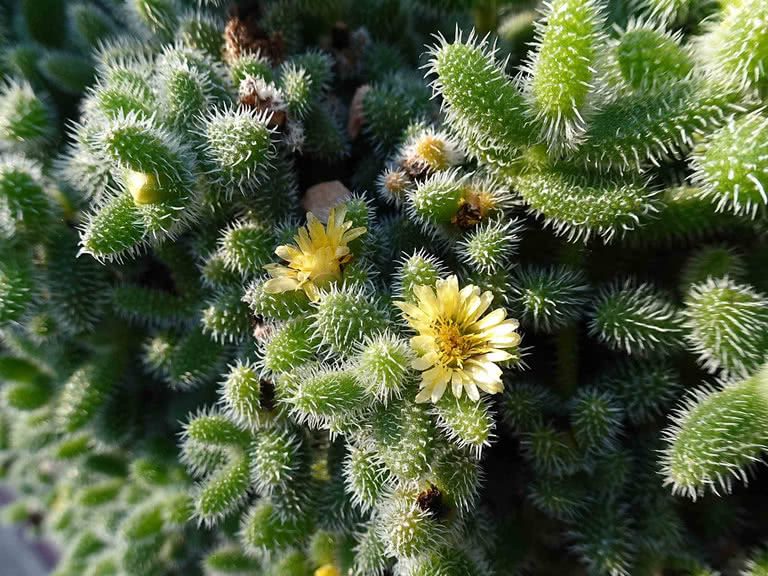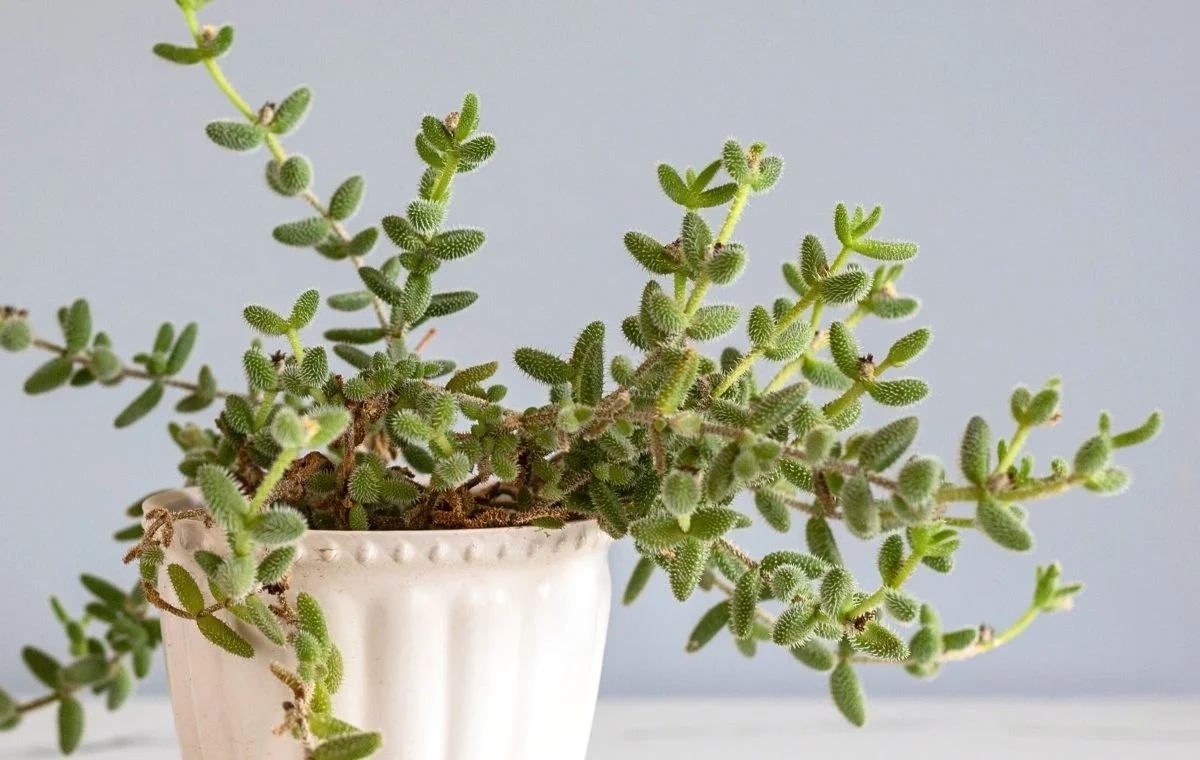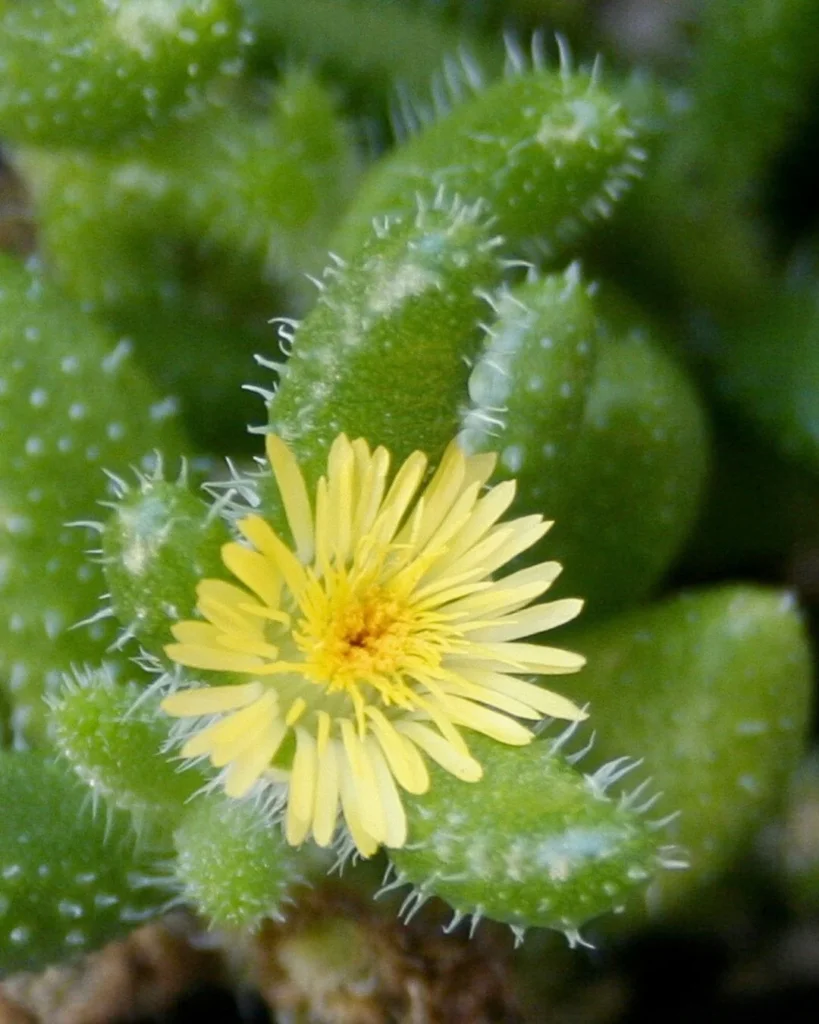The Pickle Plant (Delosperma echinatum), as its name suggests, is a succulent species featuring leaves reminiscent of pickled cucumbers. It is a perennial plant with significant ornamental value. This succulent is native to South Africa, thriving in semi-arid areas, which explains its excellent adaptation to drought conditions. The genus name, Delosperma, means “visible seed” in Greek, referring to the visible seeds of the plant’s open capsule (fruit), while the specific epithet, echinatum, refers to its spiny texture, akin to a hedgehog (from Greek “echinos“).
The leaves are thick, rounded, and grow on short stems, reaching a maximum height of about 4 to 5 inches (10 to 12 centimeters). Additionally, both the leaves and stems are covered with short, rigid trichomes (hairs) that resemble spines but are harmless. These trichomes are glandular, indicating small water-filled vesicles along the surfaces, contributing to the pickle or sea cucumber-like appearance, giving the leaves a special shine. The flowers of the Pickle Plant can be white, white with a yellow center, or entirely yellow. They resemble daisies and usually appear in spring and summer.

The Pickle Plant can be cultivated outdoors or indoors, provided they receive direct sunlight for a few hours. Like all succulents, it becomes more compact and ornamental when grown in full sun. It is commonly cultivated in pots but also fares well in flower beds and miniature gardens, often standing out among other species, especially when its flowers bloom. The unique shape and texture of its leaves can be used as an additional attraction, enchanting viewers, particularly children.
As a bonus, this plant attracts pollinators, especially butterflies, making the garden even more interesting. Its maintenance involves occasional decapitation (cutting off the top portion and using that part for replanting) every three years, to shape and control growth, as well as to renew the root system and prevent root rot.
It should be grown in full sun or partial shade and watered when the soil is dry. It adapts to arid and semi-arid conditions, easily developing in poor soils, preferably well-drained with good aeration and a slightly acidic to neutral pH. Growing in pots is easier to control the plant’s growth, and it is important that both the pot and substrate have good drainage. Cultivating this succulent in waterlogged substrate can be fatal. It is cold-tolerant, suitable for southern regions and mountainous areas.

Like other succulents, it is important to fertilize gently (⅓ of normal fertilization) during spring and summer. When planted directly in the ground, it spreads easily horizontally, producing new shoots. Therefore, in these conditions, its growth should be monitored to ensure it does not become invasive. When grown in low light, it tends to become leggy, with branches elongating and sparse leaves. It can be propagated by cuttings or seeds.


